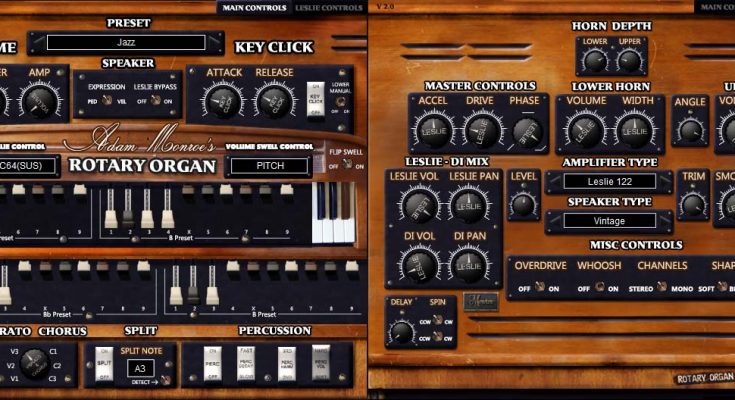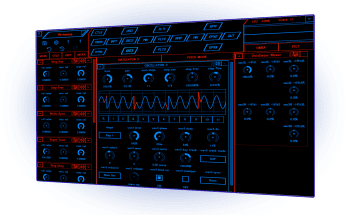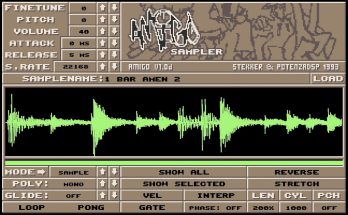The Rotary Organ was sampled from a Hammond M3 organ. The end goal was to simulate the sound of a Hammondnd B3 organ with a Leslie rotary speaker inside a VST / AU / AAX plugin. Each register on each note was sampled individually through the built-in organ speaker with a Neumann TLM 102 microphone.
The signal was fed through a Fender Deluxe Reverb and recorded on a Sennheiser e906. Both signals were routed through the Grace M101 preamps. The Hammond M3 organ combines the last two harmonics into one register, this note has been dropped. Instead, a “digital foldback” technology was used to expand the Hammond M3 harmonics to resemble the Hammond B3 harmonics.
The organ range has been expanded to look like that of the Hammond B3. This was achieved by using the character of the organ pedals to add notes of the lower octave.
To emulate a real Leslie speaker, an emulation was developed. The signal is split into a virtual bottom rotor and a virtual top rotor with a frequency of about 600 Hz. Vibrato, chorus and pan processing are used to simulate the rotation of the rotors. The upper rotor spins between 48/409 rpm and the lower rotor spins between 40/354 rpm. The rotation of the lower rotor can be disabled. Leslie’s simulation can also be bypassed.
B3 effects, which are also digitally modeled and include percussion, vibrato, and key sounds. Vibrato is similar to B3 and includes vibrato itself as well as vibrato + chorus. Keystrokes were simulated by adding random noises to attack and sample release. There was some clicking in the original samples, but the effect was exaggerated. Percussion was modeled in VST, just like in real life: a higher amplitude, percussive decay sound is added to the instrument via the 2nd or 3rd harmonic. The plugin also includes everb, braking, variable acceleration, drive / distortion, smoothing, adjustable stereo panning, key-splitting, and preset switching.
The instrument has been EQ-processed to sound a little more aggressive than a typical Hammond organ and will therefore stand out in the mix. This can be adjusted with the “smooth” knob, which will attenuate some of the higher frequencies.




